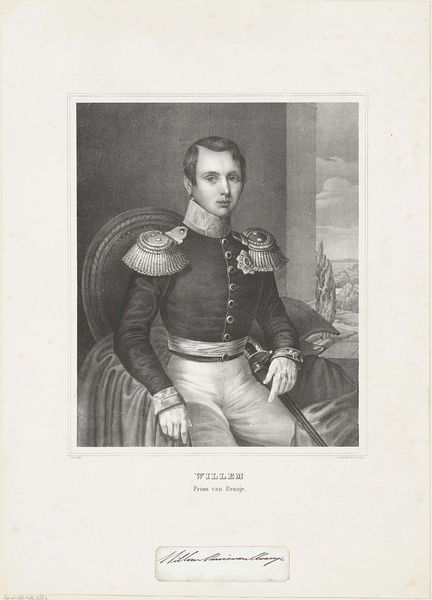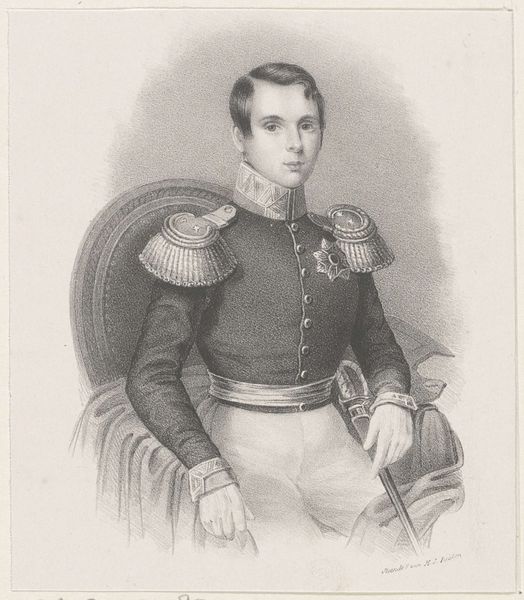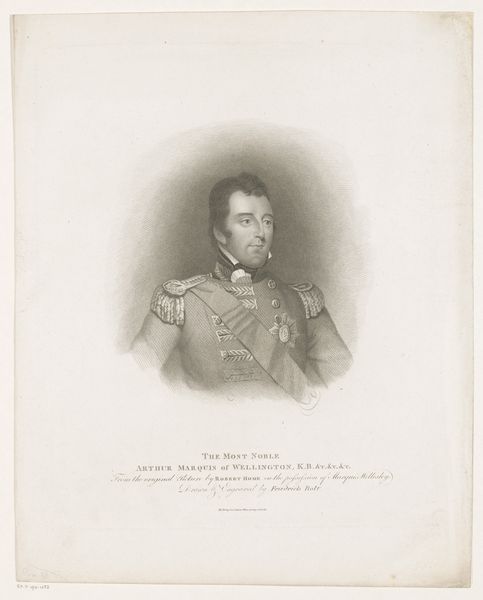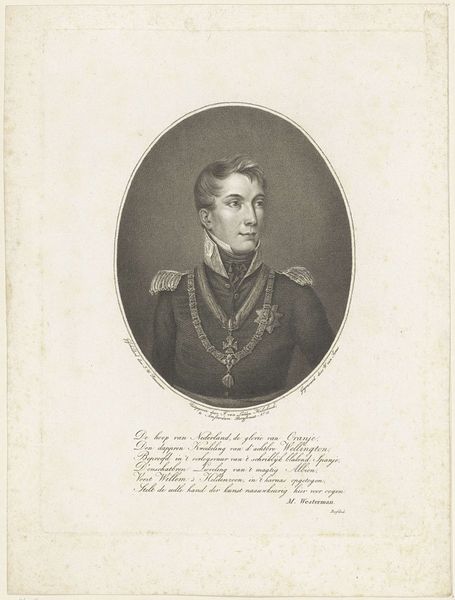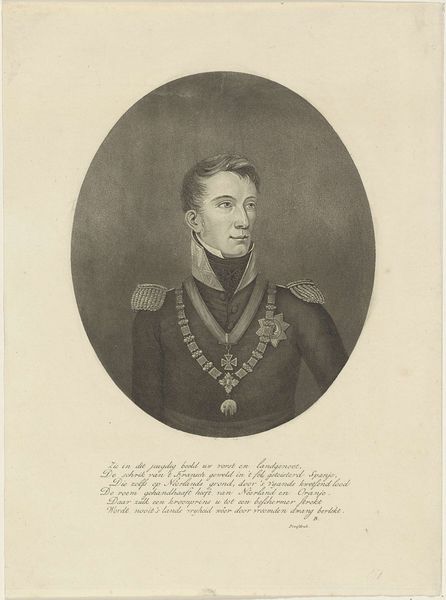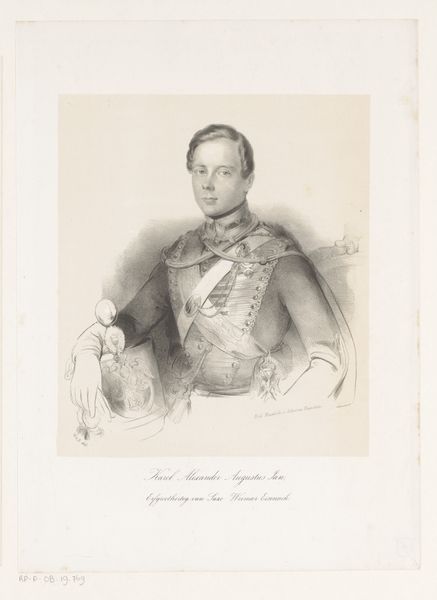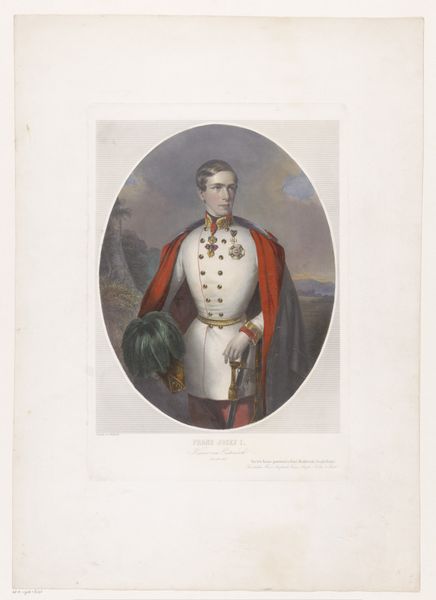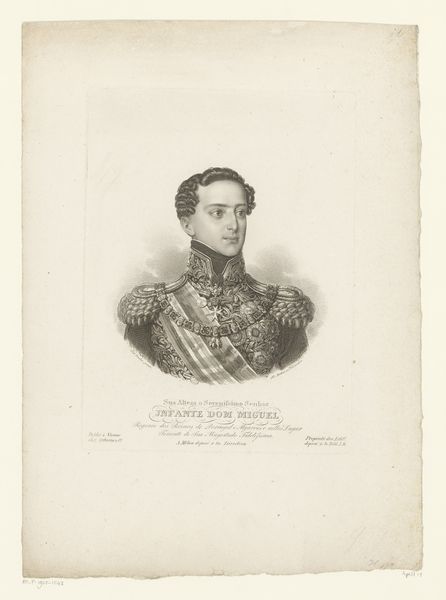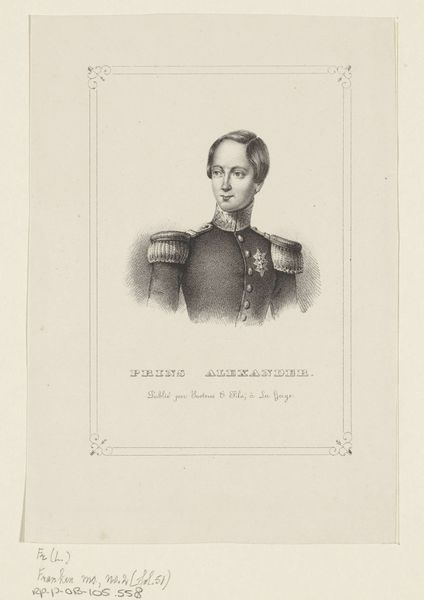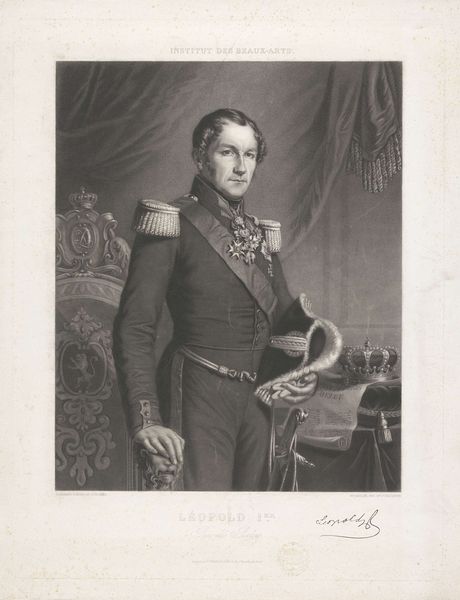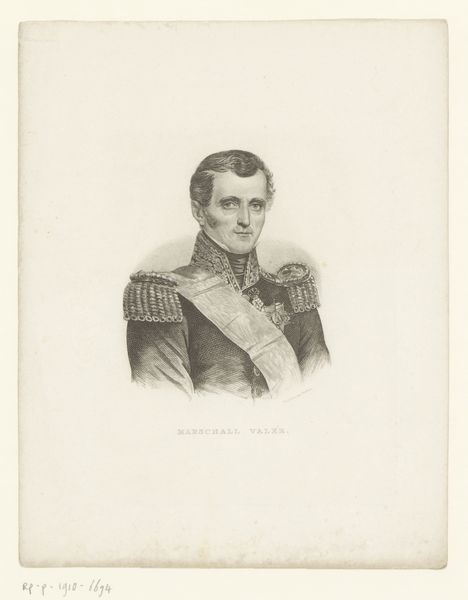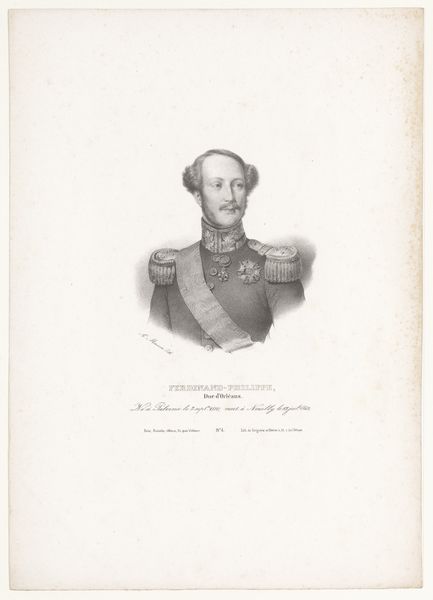
print, engraving
#
portrait
# print
#
archive photography
#
historical photography
#
history-painting
#
academic-art
#
engraving
Dimensions: height 527 mm, width 411 mm
Copyright: Rijks Museum: Open Domain
Curator: Here we have an engraving titled "Portret van Willem III, koning der Nederlanden," depicting King William III of the Netherlands. This print, created by Johann Georg Schreiner, dates sometime between 1835 and 1859. Editor: It strikes me as an image deeply invested in control. The palette is restrained, almost entirely monochrome, lending it a severe formality. And those precise lines...they contribute to the impression of someone tightly bound by expectation. Curator: Yes, consider that the symbolic weight is really palpable here. William III, heir to the throne, is depicted in formal military attire, a choice that reinforces notions of power and duty. The meticulous rendering speaks to the visual language that constructs ideas around nationhood and legacy. Editor: I can appreciate that interpretation, but the tonal range within the grey scale intrigues me the most. Look at the subtle modulation on the face versus the much more active pattern within the rendering of his sleeves and the drape of his seat. Those design elements act almost like stage props, don't you think, underscoring the controlled narrative we see? Curator: Indeed, and the sword and uniform also represent inherited responsibility. During the period, monarchical representation very deliberately linked an individual ruler with a much larger tradition of leadership, suggesting that a king was but one piece of a historical succession. It speaks to cultural memory being purposefully evoked and deployed in art. Editor: That makes me think too that it presents a fascinating example of surface treatment – from the rendering of fine linen to the gleam of the metalwork on the uniform – the engraver really draws our eye to the technical execution. A virtuoso performance, wouldn’t you agree? Curator: Absolutely, Schreiner uses academic techniques here to elevate Willem, but those same techniques are used again and again across the portraits of nobility of this era. The portrait not only depicts an individual but uses widely recognizable codes of representation to assert particular historical claims and power dynamics. Editor: Well, whether read as symbolism or observed purely for formal arrangement, Schreiner's technical approach here certainly captures the imposing atmosphere that defines the era’s artistic ambitions. Curator: Indeed. And understanding these dynamics helps to reveal the layered meanings and continuing resonance this portrait holds, even today.
Comments
No comments
Be the first to comment and join the conversation on the ultimate creative platform.
